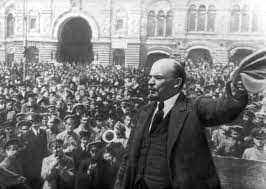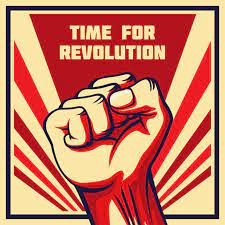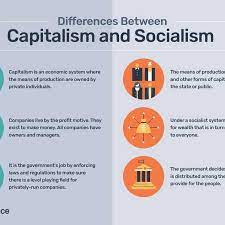- Books Name
- Learn with me Social Science Book
- Publication
- Learn with me publication
- Course
- CBSE Class 9
- Subject
- Social Science
The Russian Revolution
In the October Revolution of 1917, socialists took over the government in Russia. The fall of monarchy in February 1917 and the events of October were termed as the Russian Revolution.

The Russian Empire in 1914
- In 1914, Russia was ruled by Tsar Nicholas II and its empire. The Russian Empire included current-day Finland, Latvia, Lithuania, Estonia, parts of Poland, Ukraine and Belarus, stretching to the Pacific and comprised today’s Central Asian states, as well as Georgia, Armenia and Azerbaijan.
- Majority of the population was Russian Orthodox Christianity.
Economy and Society
- At the beginning of the twentieth century, Russian population was dominated by agriculturalists, who used to cultivate for the market as well as for their own needs. St Petersburg and Moscow were prominent industrial areas.
- Craftsmen undertook much of the production, but large factories existed alongside craft workshops. In the 1890s more factories were set up after and foreign investment in industry increased.
- Large factories were supervised by the government to ensure minimum wages and limited hours of work. Workers were a divided social group.
- They were also divided by their skill. Despite divisions, workers united to stop work when they disagreed with employers about dismissals or work conditions.
- Peasants cultivated most of the land but the nobility, the crown and the Orthodox Church owned large properties.
- Nobles got power and position through their services to the Tsar. In Russia, peasants wanted the land of the nobles.

Socialism in Russia
- Political parties in Russia were legal before 1914. In 1898, socialists founded the Russian Social Democratic Workers Party who respected Marx’s ideas.
- Some Russian socialists felt that the Russian peasant custom of dividing land periodically made them natural socialists. Throughout the nineteenth century, socialists were active in the countryside and formed the Socialist Revolutionary Party in 1900.
- The party struggled for peasants’ rights and demanded land belonging to nobles be transferred to peasants. The party was divided over the strategy of organisation.
- According to Vladimir Lenin in a repressive society like Tsarist Russia, the party should be disciplined and should control the number and quality of its members. Mensheviks thought that the party should be open to all.

A Turbulent Time: The 1905 Revolution
- Russia was an autocracy and even at the beginning of the twentieth century, the Tsar was not subject to Parliament.
- During the Revolution of 1905, Russia along with the Social Democrats and Socialist Revolutionaries, worked with peasants and workers to demand a constitution.
- For Russian workers, bad times started from the year 1904 as prices of essential goods rose and their real wages declined by 20 per cent.
- Workers went on strike demanding a reduction in the working day to eight hours, an increase in wages and improvement in working conditions.
- The procession was attacked by the police and the Cossacks when it reached the Winter Palace. The incident, known as Bloody Sunday, started a series of events which resulted in the 1905 Revolution.
- During the 1905 Revolution, the Tsar allowed the creation of an elected consultative Parliament or Duma. After 1905, most committees and unions worked unofficially, since they were declared illegal.
The First World War and the Russian Empire
- In 1914, war broke out between two European alliances – Germany, Austria and Turkey (the Central powers) and France, Britain and Russia (later Italy and Romania). This was the First World War.
- The war became popular and as it continued, the Tsar refused to consult the main parties in the Duma. Support wore thin.
- The First World War was different on the easter front and on the western front. Between 1914 and 1916 Russian army lost badly in Germany and Austria.
- Russian army destroyed crops and buildings to prevent the enemy from being able to live off the land. The country was cut off from other suppliers of industrial goods by German control of the Baltic Sea. railway lines began to break down by 1916.
- For the people in the cities, bread and flour became scarce. By the winter of 1916, riots at bread shops were common.

 Learn with me publication
Learn with me publication
